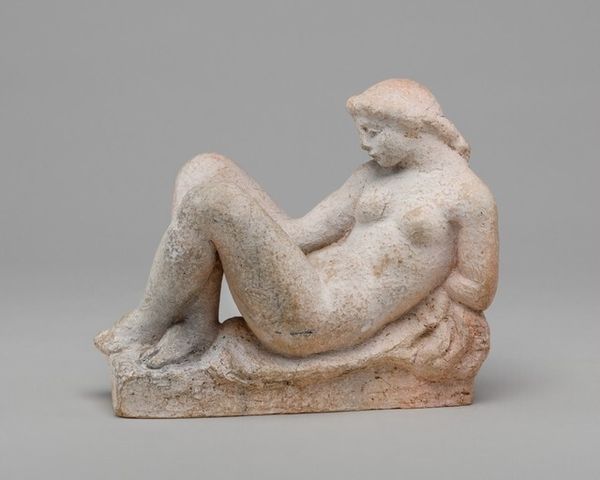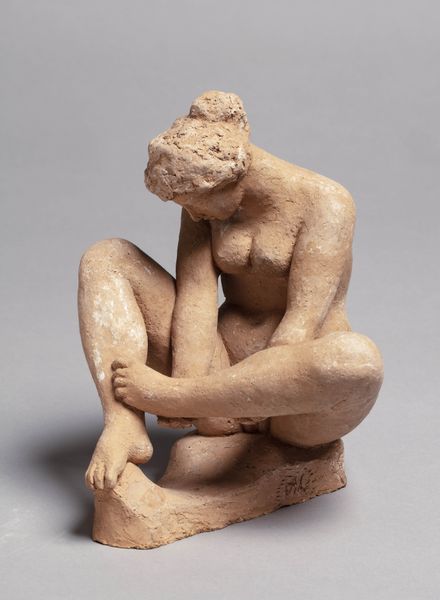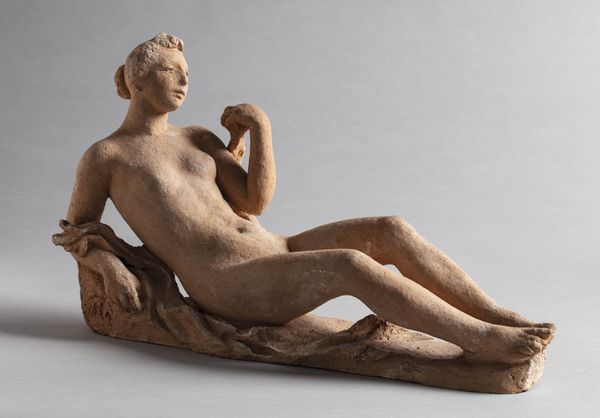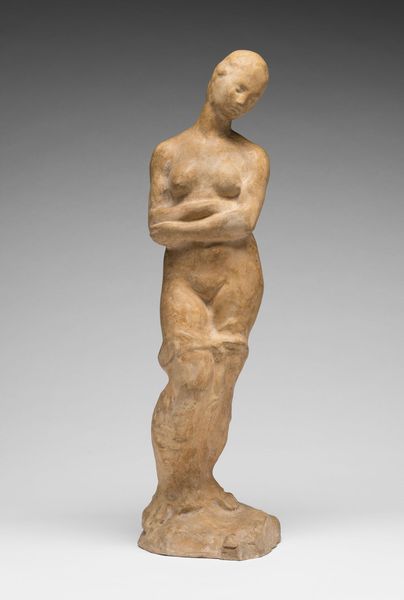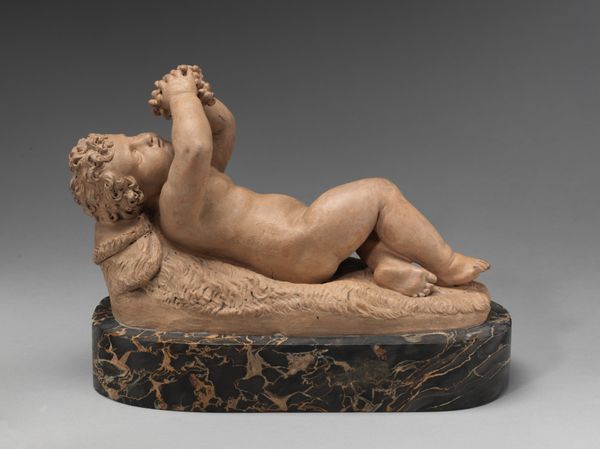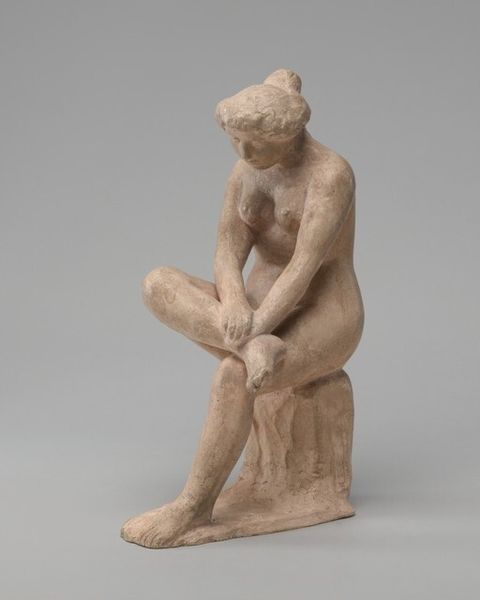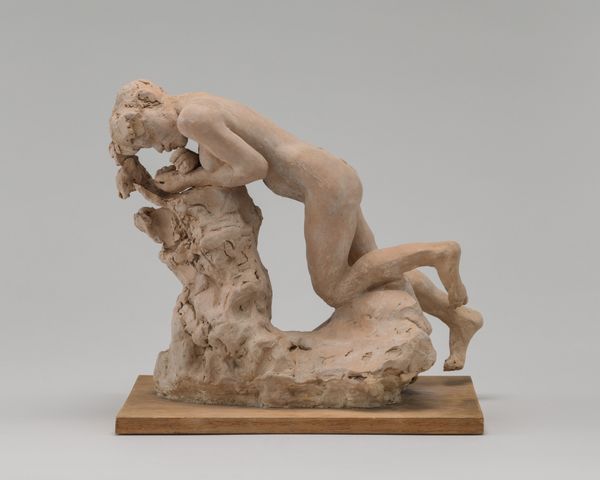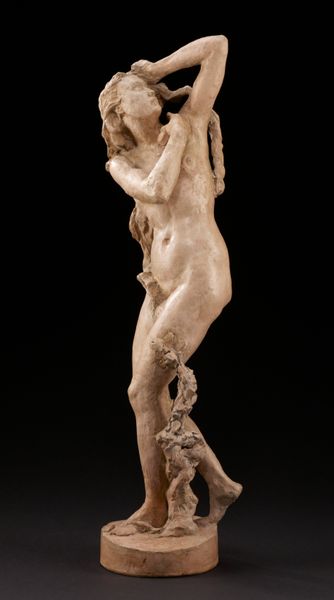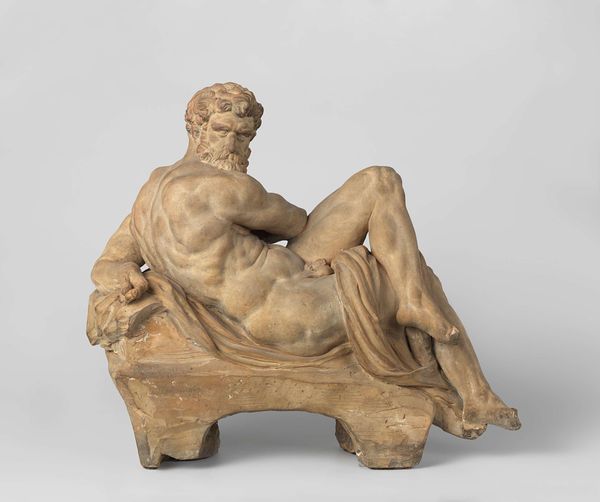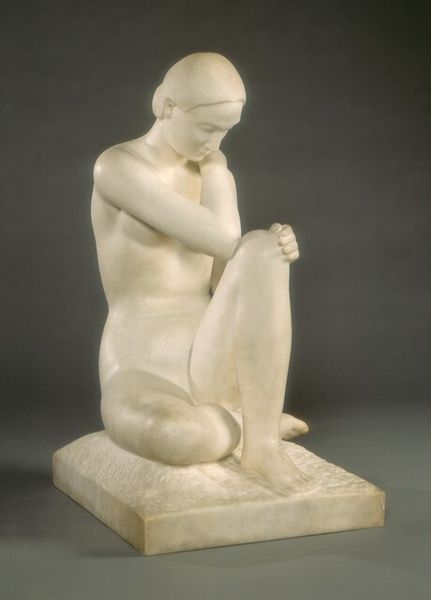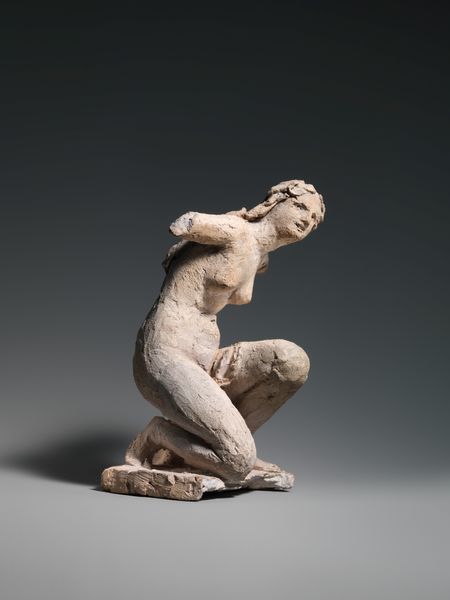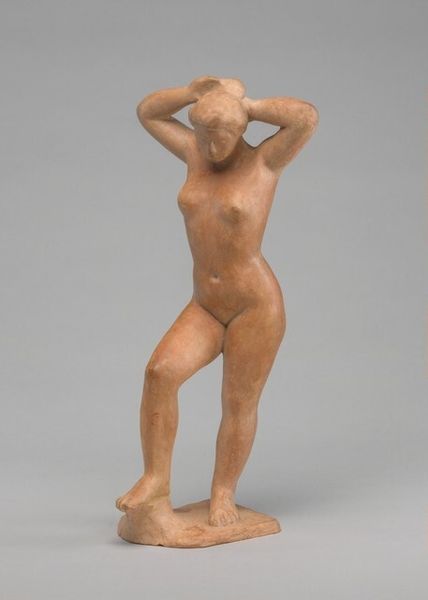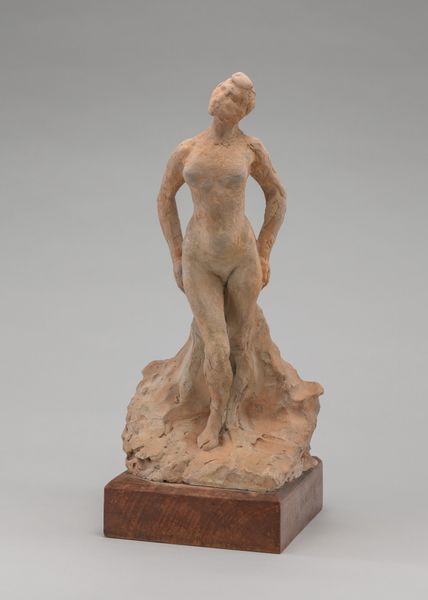
sculpture, terracotta
#
statue
#
art-nouveau
#
sculpture
#
figuration
#
sculpture
#
terracotta
#
nude
Dimensions: overall: 15.9 x 21 cm (6 1/4 x 8 1/4 in.)
Copyright: National Gallery of Art: CC0 1.0
Curator: This is Aristide Maillol's terracotta sculpture, "Modesty," created around 1900. Editor: It feels...fragile. The pose, the texture of the terracotta – there’s an intimacy that's both comforting and unsettling. It invites quiet contemplation. Curator: Maillol’s interest in materiality is key. Think of the labor involved in working with terracotta, the physicality required to mold the clay, and the skill needed to achieve this smooth surface. The traces of the artist's hand are deliberately minimized, giving us instead an industrially inspired form. Editor: But what does it mean to name this reclining nude "Modesty"? Is it about societal expectations imposed on women’s bodies at the turn of the century? Or is Maillol responding to and perhaps even complicit with the male gaze and the historical representation of women? Curator: It's interesting that you frame it like that. We can look at it from a Marxist perspective too. "Modesty" isn't just an ideal, it's a commodity being manufactured, not for use but for symbolic exchange within the art market, thereby becoming another expression of male dominance and labor. Editor: Exactly. I’d even go further, and discuss the gaze intersecting with race and colonialism in France around 1900. Who gets to define ‘modesty’ and whose bodies are deemed ‘immodest’ as part of the colonial project? Curator: You make a critical point about the commodification and consumption. Given the style, one sees connections with Art Nouveau’s focus on decorative objects designed for a growing consumer class. But while appearing demure and delicate, she's simultaneously robust. Editor: I find the title "Modesty" almost ironic. We must consider this piece as a reflection of how society projects and polices ideal womanhood, especially in the shadow of the Belle Époque's complexities regarding female representation. Curator: Viewing "Modesty" now has certainly broadened how I understand the complex intersection of the artist's process, the material he employed, and the societal values he perhaps inadvertently reproduced. Editor: Yes, for me, it’s less about the literal 'modesty' and more about using this artwork as a springboard to examine broader discussions of power, representation, and the politics of seeing.
Comments
No comments
Be the first to comment and join the conversation on the ultimate creative platform.
